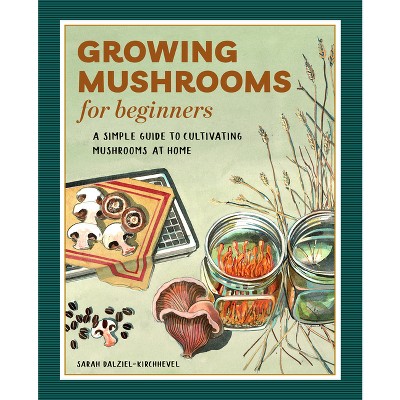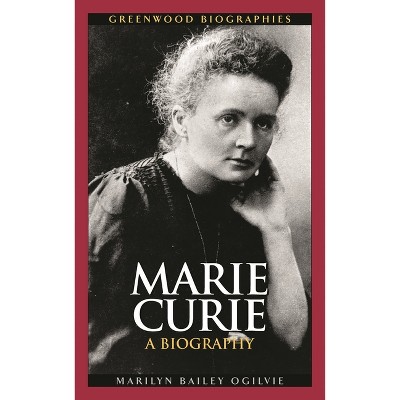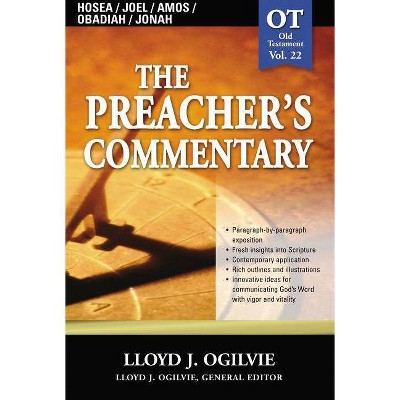Sponsored

The Science of Describing - by Brian W Ogilvie (Paperback)
$40.00
In Stock
Eligible for registries and wish lists
Sponsored
About this item
Highlights
- Out of the diverse traditions of medical humanism, classical philology, and natural philosophy, Renaissance naturalists created a new science devoted to discovering and describing plants and animals.
- About the Author: Brian W. Ogilvie is associate professor of history at the University of Massachusetts-Amherst.
- 402 Pages
- Science, History
Description
Book Synopsis
Out of the diverse traditions of medical humanism, classical philology, and natural philosophy, Renaissance naturalists created a new science devoted to discovering and describing plants and animals. Drawing on published natural histories, manuscript correspondence, garden plans, travelogues, watercolors, and drawings, The Science of Describing reconstructs the evolution of this discipline of description through four generations of naturalists. In the late fifteenth and early sixteenth centuries, naturalists focused on understanding ancient and medieval descriptions of the natural world, but by the mid-sixteenth century naturalists turned toward distinguishing and cataloguing new plant and animal species. To do so, they developed new techniques of observing and recording, created botanical gardens and herbaria, and exchanged correspondence and specimens within an international community. By the early seventeenth century, naturalists began the daunting task of sorting through the wealth of information they had accumulated, putting a new emphasis on taxonomy and classification. Illustrated with woodcuts, engravings, and photographs, The Science of Describing is the first broad interpretation of Renaissance natural history in more than a generation and will appeal widely to an interdisciplinary audience.Review Quotes
"[Ogilvie] illustrates wonderfully how16th-century natural history used the tool of philoology to establish the credibility of anceint texts, exotic discoverers and fellow natural historians. . . . Including an extensive survey of primary sources and peppered with wonderful anecdotes on little-studied details of 16th-17th-century science, this work might well become the definitive work on erudite Renaissance natural history for years to come."
"[The book] is attractively written, lucid, and well illustrated, and it makes excellent use of the extensive existing scholarship."
"A tour de force, full of fascinating detail. Importantly, Ogilvie never gets lost in facts but rather successfully arranges them into a new challenging interpretive framework for understanding the emergence and the practice of Renaissance natural history. . . . Enormously engaging, and written with a passion that rivals that of the sixteenth-century naturalists themselves, this book can be heartily recommended to all who wish to learn more about the European origins of the modern investigation of nature."
"""What did Renaissance naturalists actually do? How and why did they do it? Starting from those simple but fundamental questions, Brian Ogilvie's strongly learned and penetrating study makes sense of the invention of natural history and the birth of a community devoted to it. In the vividly and elegantly written pages of "The Science of Describing," Ogilvie places the practice of description centerstage and offers a superb analysis and interpretation of an unfairly neglected field of early modern culture."--Laurent Pinon, Ecole Normale Superieure, Paris
"Brian Ogilvie has written a learned and challenging commentary on the emergence of natural history as a Renaissance discipline. His book offers the most comprehensive account of the growth of natural history in the late fifteenth through early seventeenth centuries and successfully demonstrates how the slow, laborious work of empiricism, conjoined with a humanist vision of knowledge and community, created a project he aptly characterizes as the science of description."--Paula Findlen, Stanford University""
"In this beautifully illustrated, fascinating book, Brian Ogilvie shows how the natural sciences developed in a vigorous and quite different way to the experimentalism of the ''hard" sciences.''
"In this wide-ranging survey, Brian Ogilvie sketches the emergence of botany as a discipline in the course of the sixteenth and early seventeenth centuries, providing a vivid portrayal of the community of early modern European naturalists, their ideas, inventions, traditions, and practices. The 'science of describing', which includes visual representation, was at the heart of their innovative approach to natural history, and there was nothing self-evident about the new forms of empiricism that permeated their approach to nature in Europe and far beyond."
--Florike Egmond, coeditor of "Bodily Extremities: Preoccupations with the Human Body in Early Modern European Culture"
"Ogilvie offers an extensively researched, lavishly documented, and detailed account of botany''s emergence as an independent intellectual enterprise in 16th-century western Europe. . . . What distinguishes this account is its ability to set its subject into a larger epistemological context."--"Choice"
"This erudite and lively book traces the invention of natural history over the course of the long sixteenth century. . . . Ogilvie''s thoughtful and richly detailed analysis of naturalists'' multiple practices gives us the fullest and most vivid picture we have of this scholarly universe, making it a valuable contribution, and one that is a pleasure to read. . . . A treasure trove of detail and insight into questions central not only to the history of natural history, but to the history of early modern science and early modern scholarship in general."
"This is a beautifully crafted and erudite book on the formation of the new discipline of natural history and its concepts from the late fifteenth century to the early seventeenth. Ogilvie's emphasis on the importance of description in the development of natural knowledge helps to transform our historical understanding of the origin and content of the scientific revolution."--Harold J. Cook, Professor and Director, Wellcome Trust Centre for the History of Medicine at University College London
"This is a wonderfully engaging and richly contextualized study of discipline formation among European naturalists ca. 1490-1630. Ogilvie moves brilliantly back and forth between big questions and specific examples to illuminate the intellectual, material, and social practices of natural history, especially botany, as the field generated and managed an unprecedented explosion of new specimens to describe."--Ann Blair, Harvard University
"A book that...breaks with tradition even as it builds on it. Brian Ogilvie argues convincingly that we need to discard, once and for all, the idea that natural history remained largely static from the era of Aristotle until the birth of the modern world."--Jim Endersby, "Times Literary Supplement"
"In this beautifully illustrated, fascinating book, Brian Ogilvie shows how the natural sciences developed in a vigorous and quite different way to the experimentalism of the ''hard" sciences.''--Adrian Barnett, "New Scientist"
"It is attractively written, lucid, and well illustrated, and it makes excellent use of the extensive existing scholarship. . . . This rich study is an important contribution to the reevaluation to which the forerunners of the new science of the seventeenth century are now being subjected."--Ian Maclean, "American Historical Review"
"A book that...breaks with tradition even as it builds on it. Brian Ogilvie argues convincingly that we need to discard, once and for all, the idea that natural history remained largely static from the era of Aristotle until the birth of the modern world."
"What did Renaissance naturalists actually do? How and why did they do it? Starting from those simple but fundamental questions, Brian Ogilvie's strongly learned and penetrating study makes sense of the invention of natural history and the birth of a community devoted to it. In the vividly and elegantly written pages of "The Science of Describing," Ogilvie places the practice of description centerstage and offers a superb analysis and interpretation of an unfairly neglected field of early modern culture."-Laurent Pinon, Ecole Normale Sup??????rieure, Paris
"Brian Ogilvie has written a learned and challenging commentary on the emergence of natural history as a Renaissance discipline. His book offers the most comprehensive account of the growth of natural history in the late fifteenth through early seventeenth centuries and successfully demonstrates how the slow, laborious work of empiricism, conjoined with a humanist vision of knowledge and community, created a project he aptly characterizes as the science of description."-Paula Findlen, Stanford University""
"In his beautifully crafted book . . . Ogilvie shows that history has much to teach us. His detailed examination of how the science of natural history developed . . . has lessons for all scientists, not just biologists. . . . [Ogilvie] has done more than just write about the Renaissance science of describing; he has written the story of how science constantly reinvents intself, seen through the lens of the pre-Linnaeans."
"It is attractively written, lucid, and well illustrated, and it makes excellent use of the extensive existing scholarship. . . . This rich study is an important contribution to the reevaluation to which the forerunners of the new science of the seventeenth century are now being subjected."
"Beautifully illustrated, fascinating." -- Adrian Barnett "New Scientist" (08/05/2006)
About the Author
Brian W. Ogilvie is associate professor of history at the University of Massachusetts-Amherst.Dimensions (Overall): 8.93 Inches (H) x 6.0 Inches (W) x .95 Inches (D)
Weight: 1.18 Pounds
Suggested Age: 22 Years and Up
Number of Pages: 402
Genre: Science
Sub-Genre: History
Publisher: University of Chicago Press
Format: Paperback
Author: Brian W Ogilvie
Language: English
Street Date: March 1, 2008
TCIN: 1006091537
UPC: 9780226620886
Item Number (DPCI): 247-22-9226
Origin: Made in the USA or Imported
If the item details aren’t accurate or complete, we want to know about it.
Shipping details
Estimated ship dimensions: 0.95 inches length x 6 inches width x 8.93 inches height
Estimated ship weight: 1.18 pounds
We regret that this item cannot be shipped to PO Boxes.
This item cannot be shipped to the following locations: American Samoa (see also separate entry under AS), Guam (see also separate entry under GU), Northern Mariana Islands, Puerto Rico (see also separate entry under PR), United States Minor Outlying Islands, Virgin Islands, U.S., APO/FPO
Return details
This item can be returned to any Target store or Target.com.
This item must be returned within 90 days of the date it was purchased in store, shipped, delivered by a Shipt shopper, or made ready for pickup.
See the return policy for complete information.
Trending Non-Fiction


$18.28
was $19.58 New lower price
4.7 out of 5 stars with 17 ratings
















